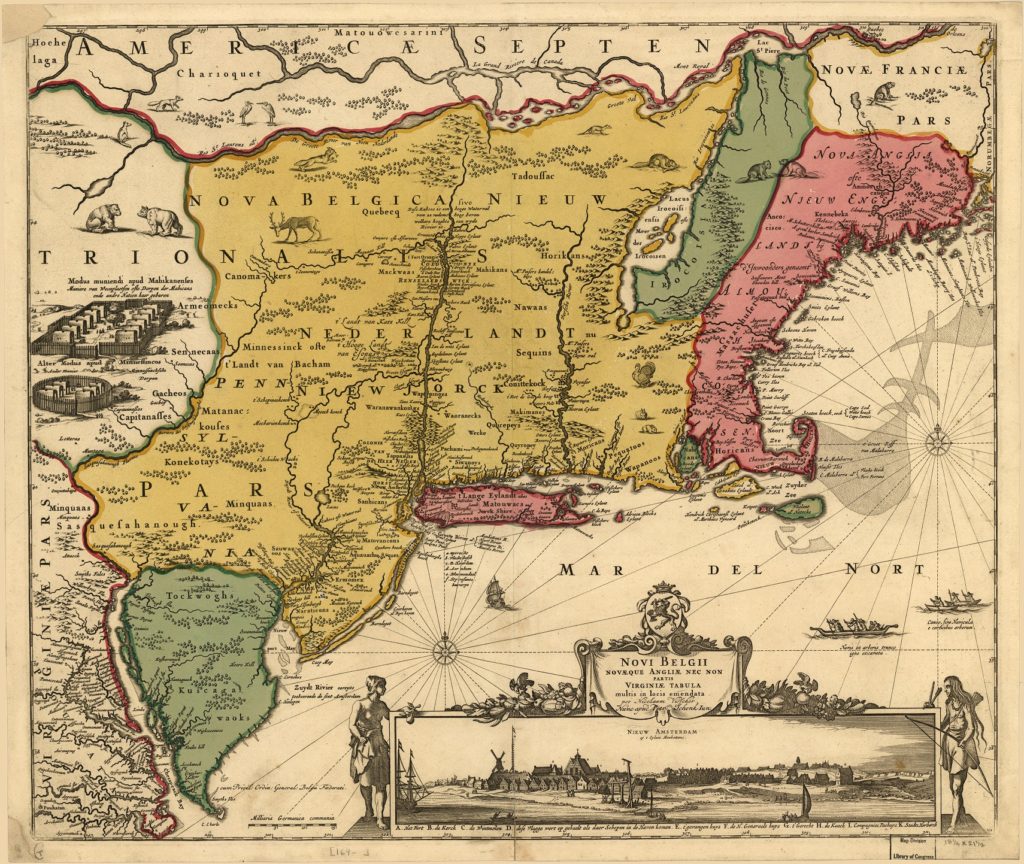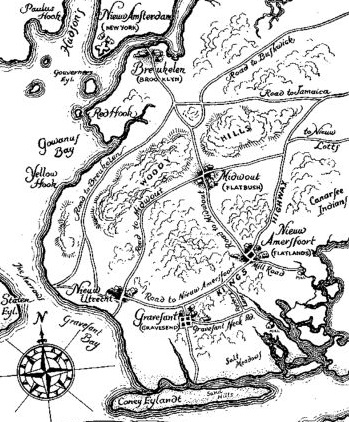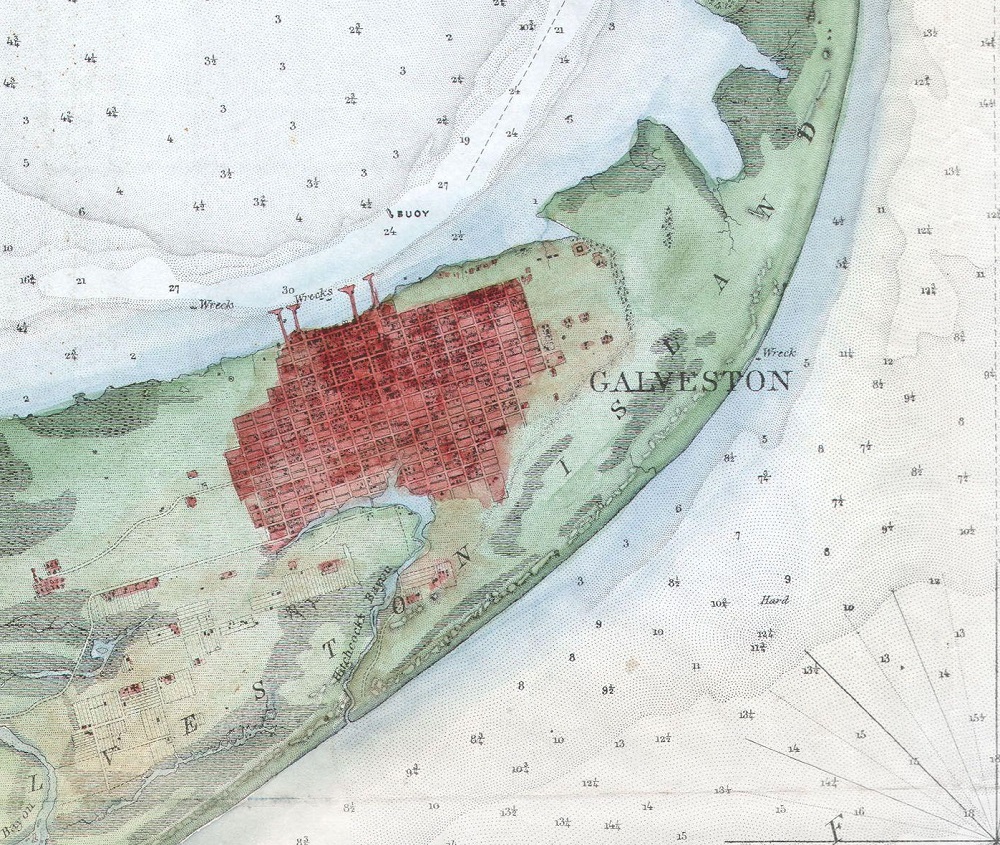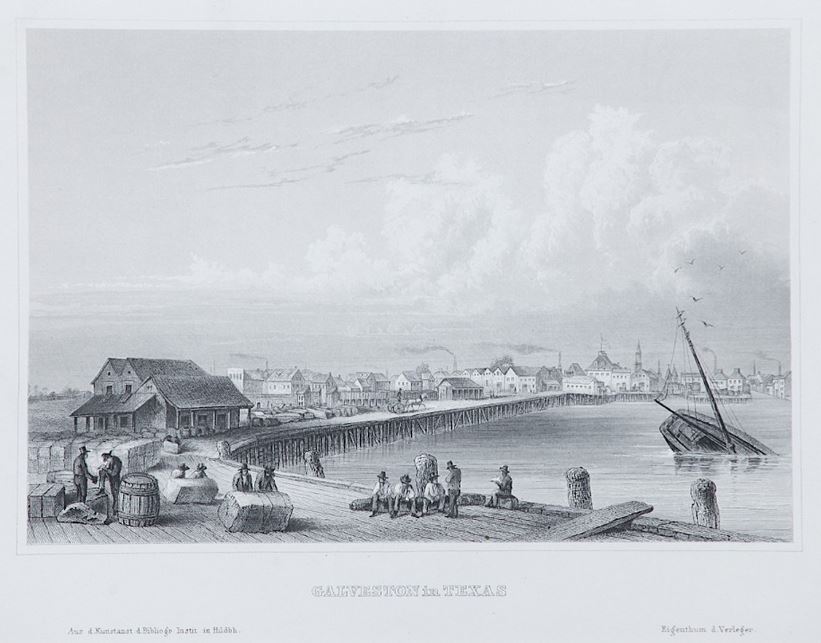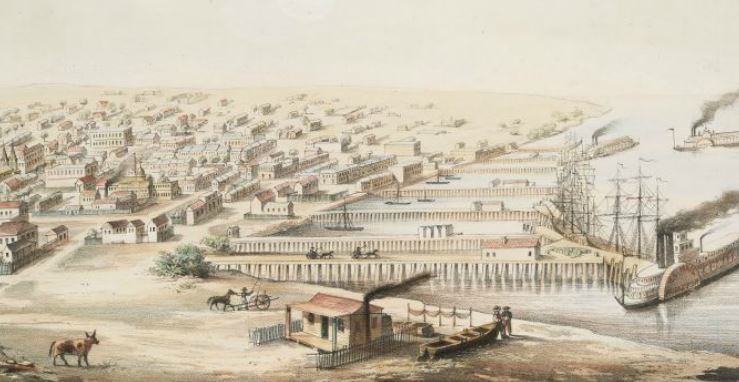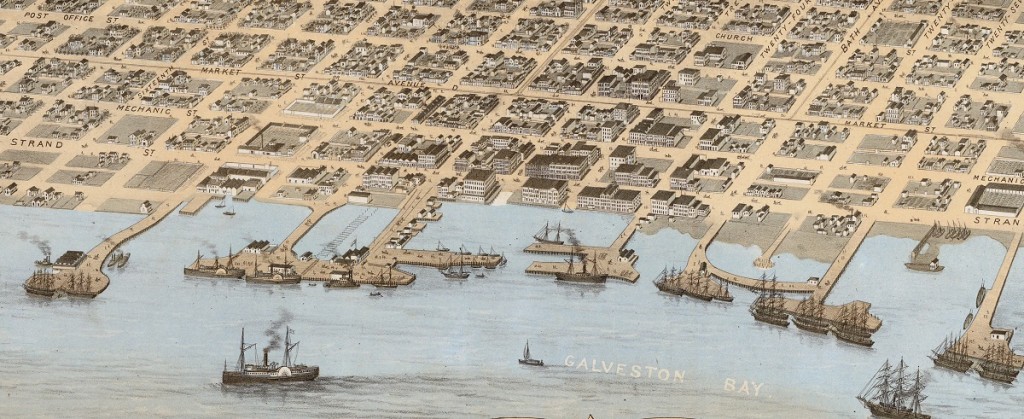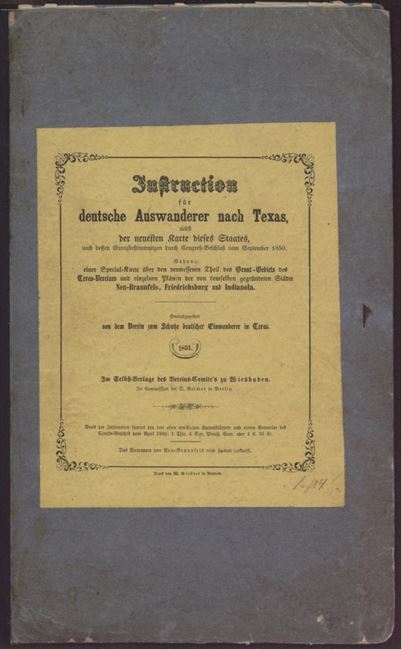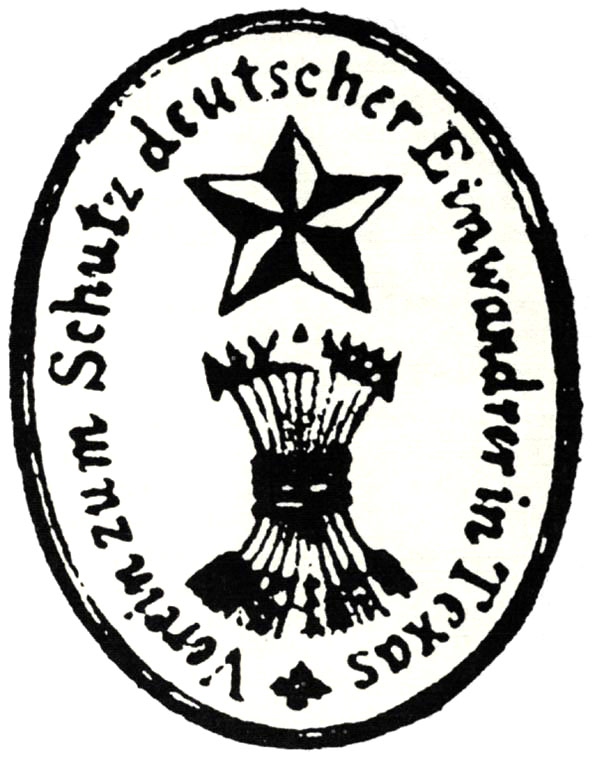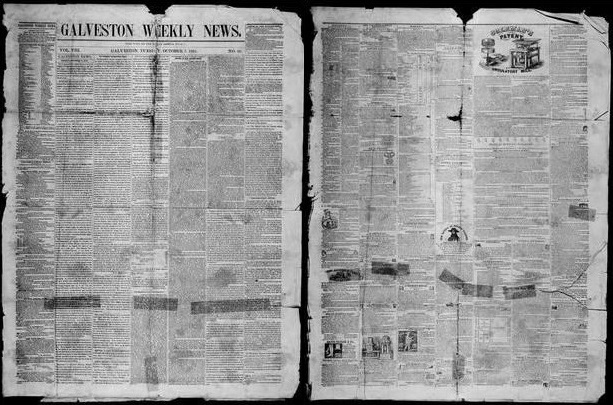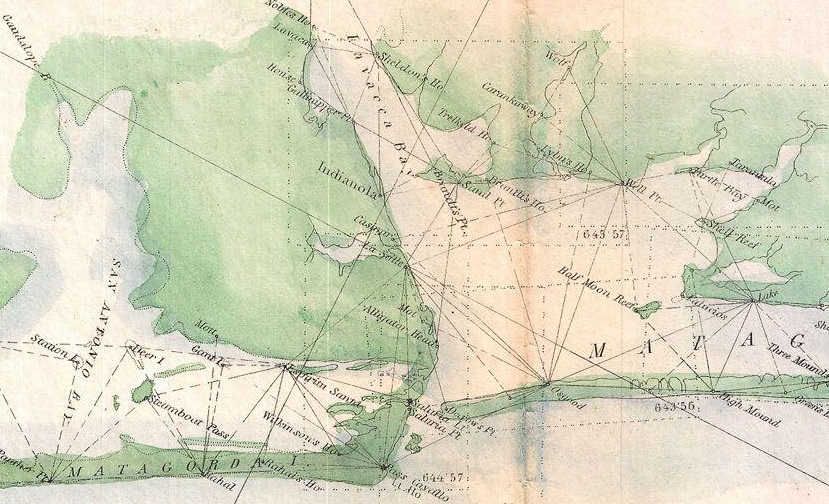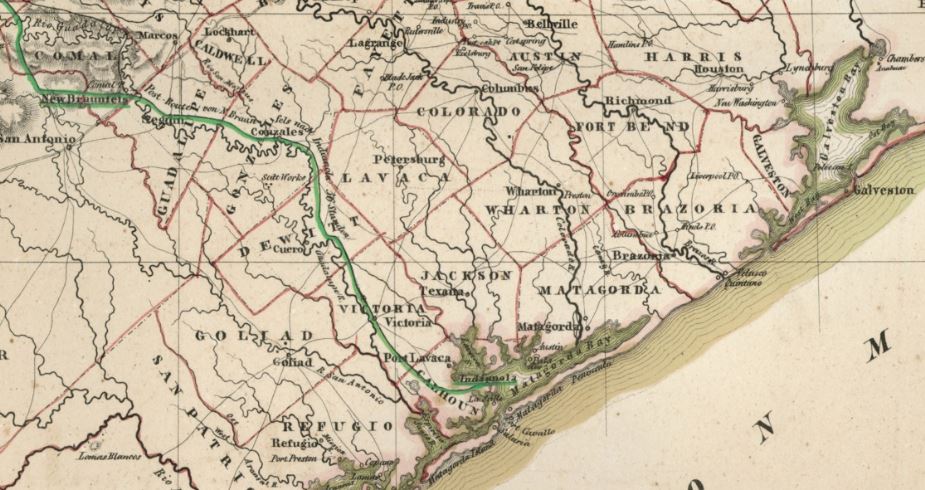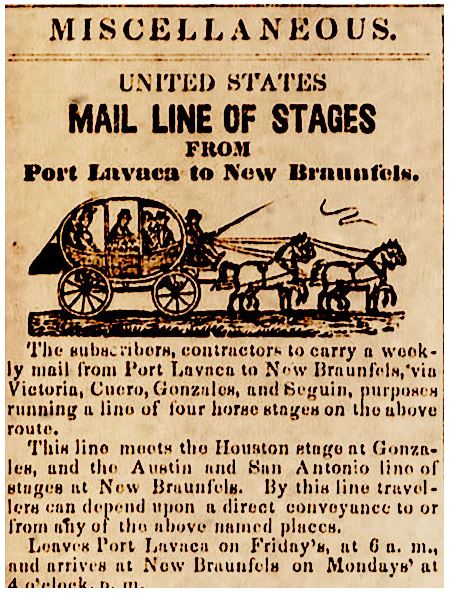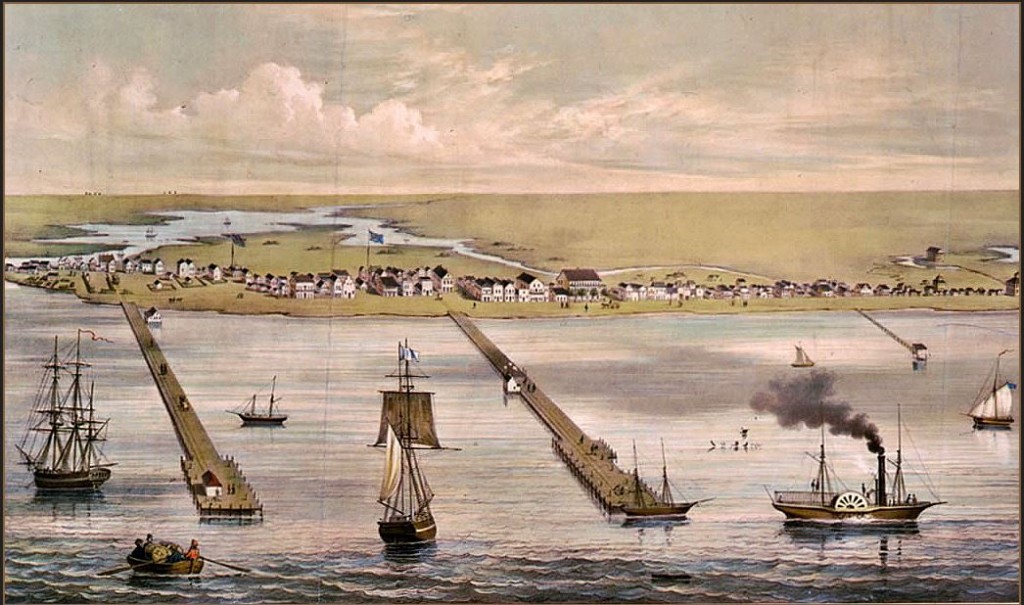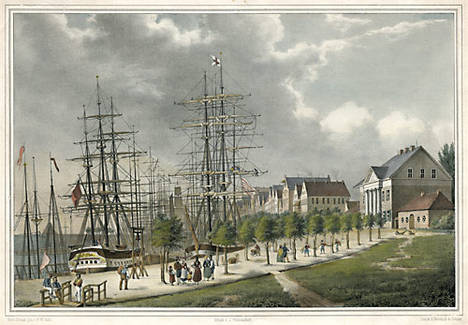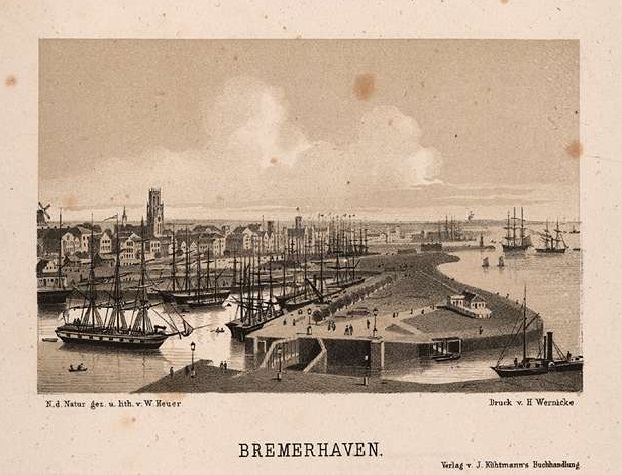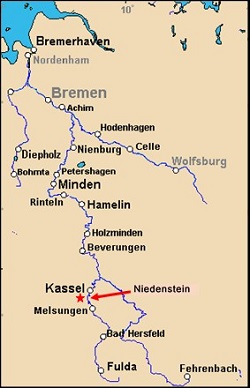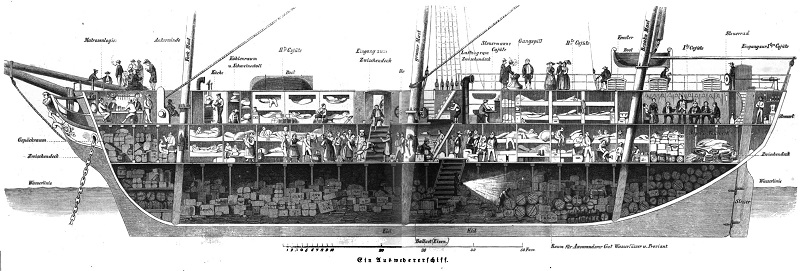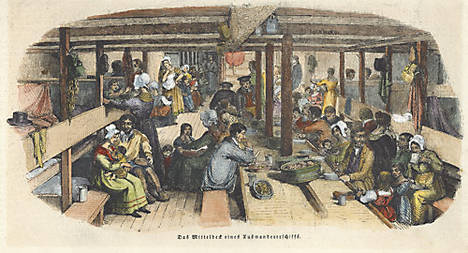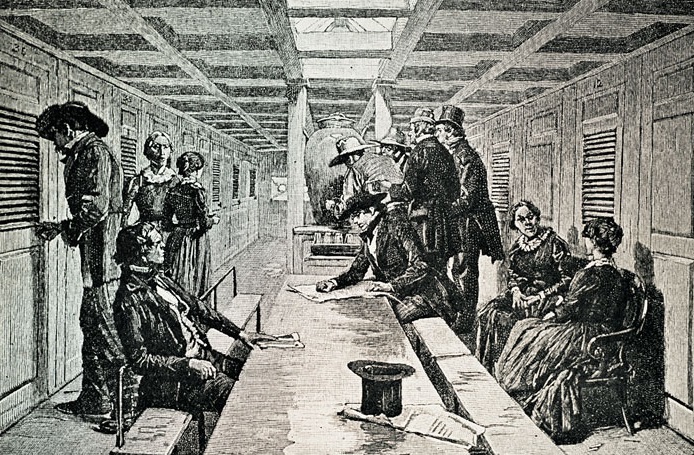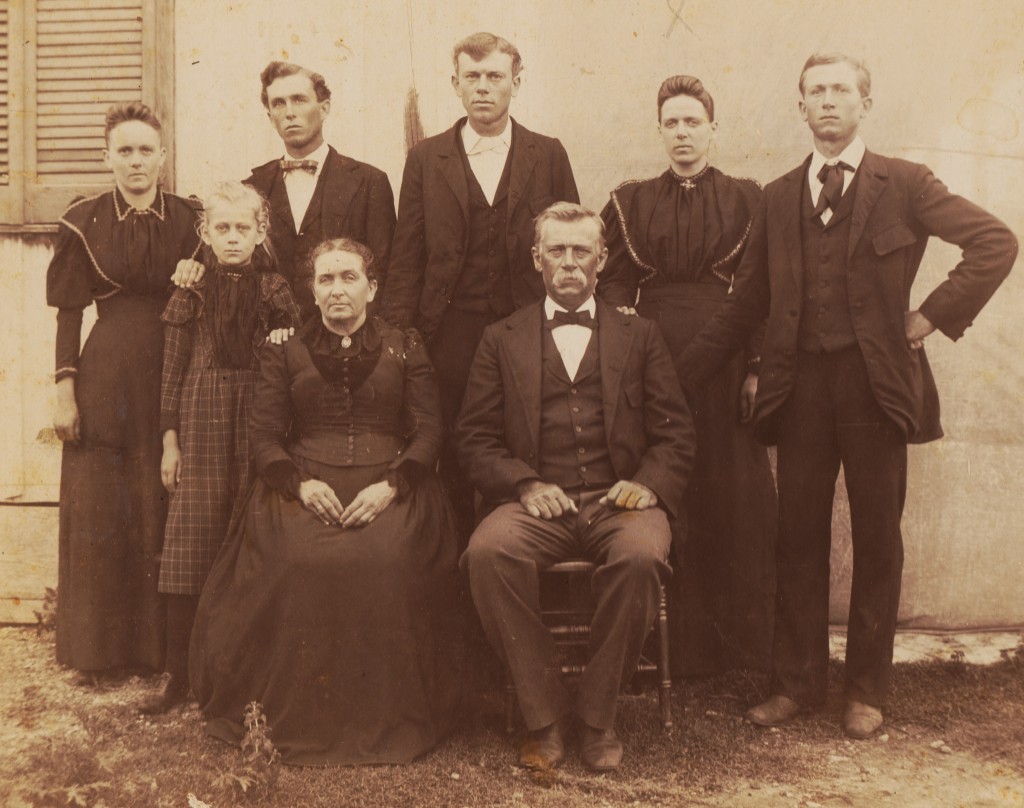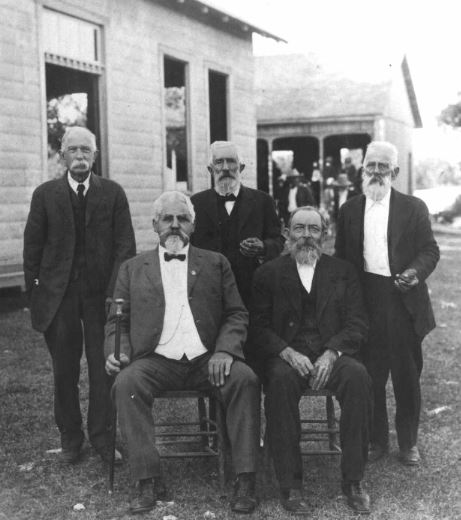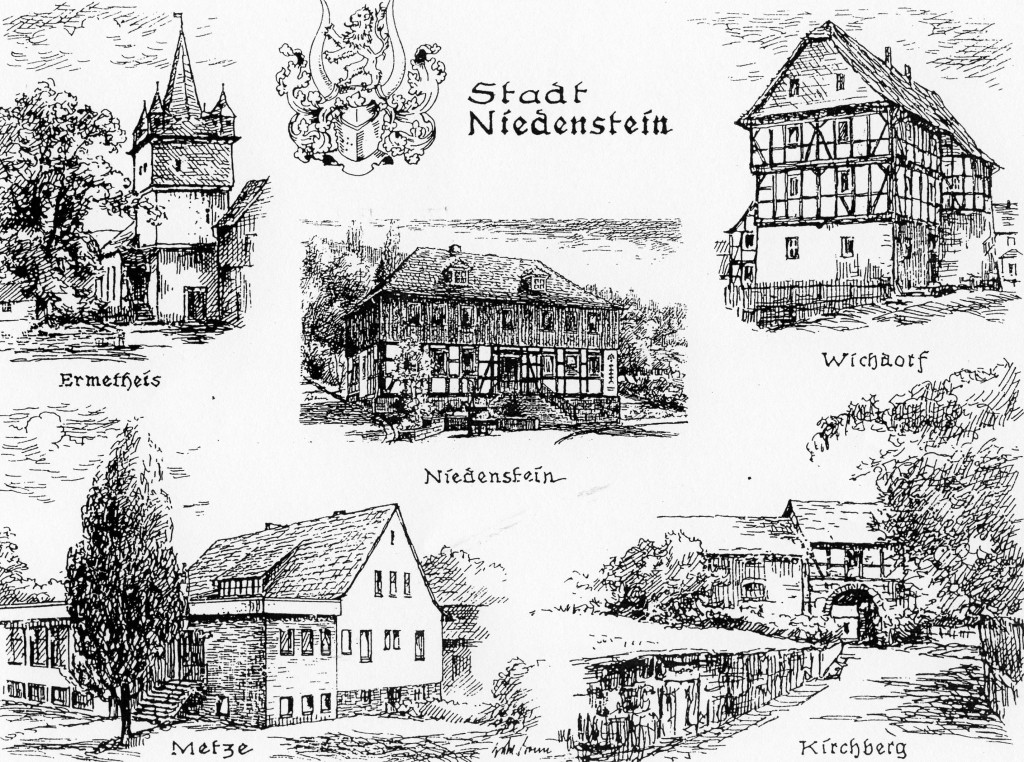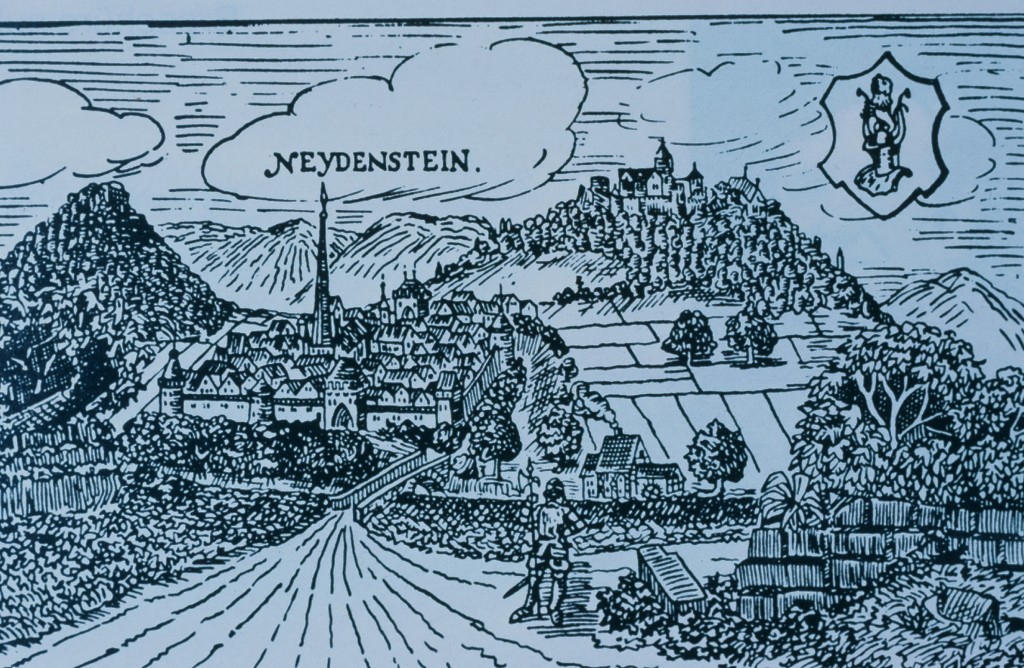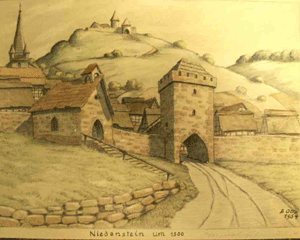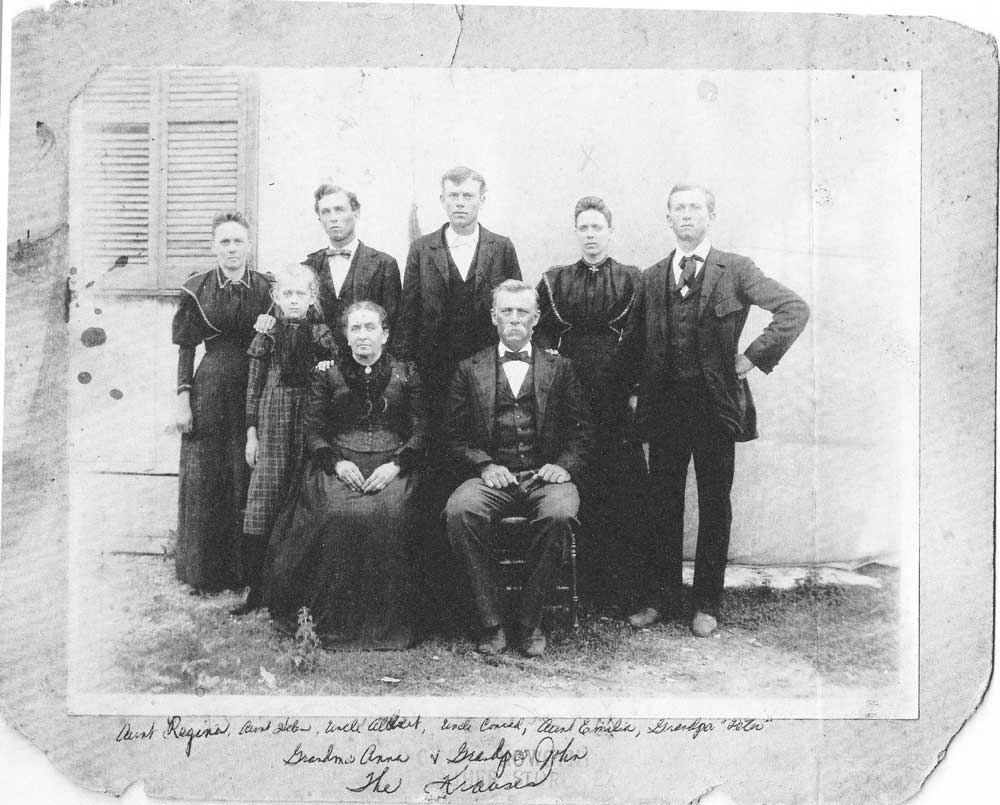When we think of New York, Manhattan Island, or the Borough of Brooklyn, we probably never think about what it was like before the time of the American Revolution when the Thirteen Colonies rejected British rule*.
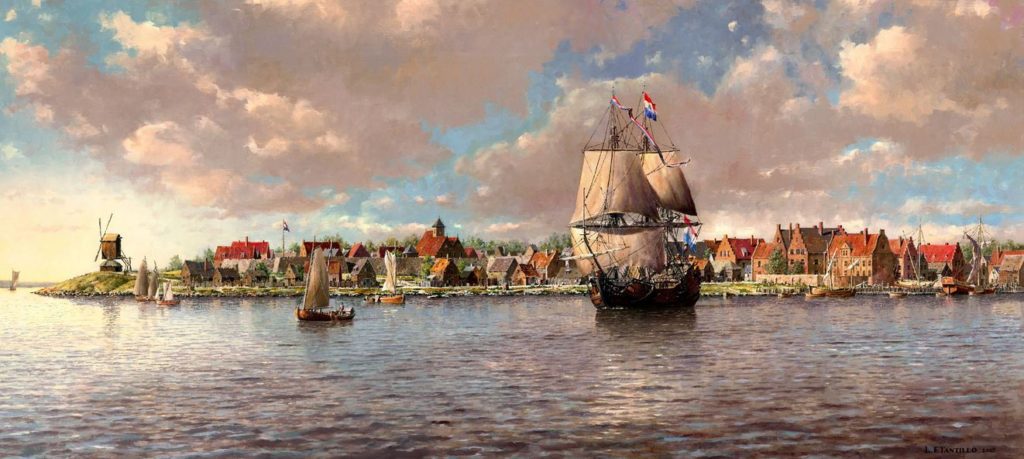
New Amsterdam on the south end of Manhattan Island c. 1670. Artwork by Len Tantillo. Image from http://nationalgeographic.org/activity/exploring-early-manhattan-through-art/. (Click on image for a larger view.)

Manhattan Island views facing south. LEFT: Sketch by J. Carson Brevoort, 1867, after an original sketch by Jasper Danckaerts, 1679. Source: http://tribecatrib.com/content/story-400-year-old-sketch-made-dutch-visitor-downtown RIGHT: Same view from top of Empire State Building on opening day, 1931. (Click on image for a larger view.)
Colonizers from England had been in North America since 1607, when the settlement of Jamestown, Virginia was attempted. English Puritans aboard the Mayflower landed at Massachusetts in 1620. Williamsburg, Virginia was founded in 1633.
In the meantime, beginning in 1609, the Eastern Seaboard between Virginia and Massachusetts was being explored, claimed, and settled by the Dutch. New Netherland was the name of this Dutch colony encompassing what are now New York State (including Manhattan and Long Island), New Jersey, and parts of several neighboring states.
In 1626, the Dutch founded New Amsterdam, a fur trading port and defensive outpost on the southern tip of Manhattan Island. Soon after, Dutch settlements expanded across the East River to Long Island where six farming townships were formed: Gravesant (1645), Breukelen (1646), Nieuw Amersfoort (1647), Midwout (1652), New Utrecht (1657), and Bushwick (1661).
During its brief run as an independent colony, New Netherland had a very open and tolerant society. Any and all were free to pass through or stay and call it home. New Amsterdam was a bustling, cosmopolitan marketplace in the global trade network. Hard work was rewarded for traders, trappers, farmers, and land barons alike.
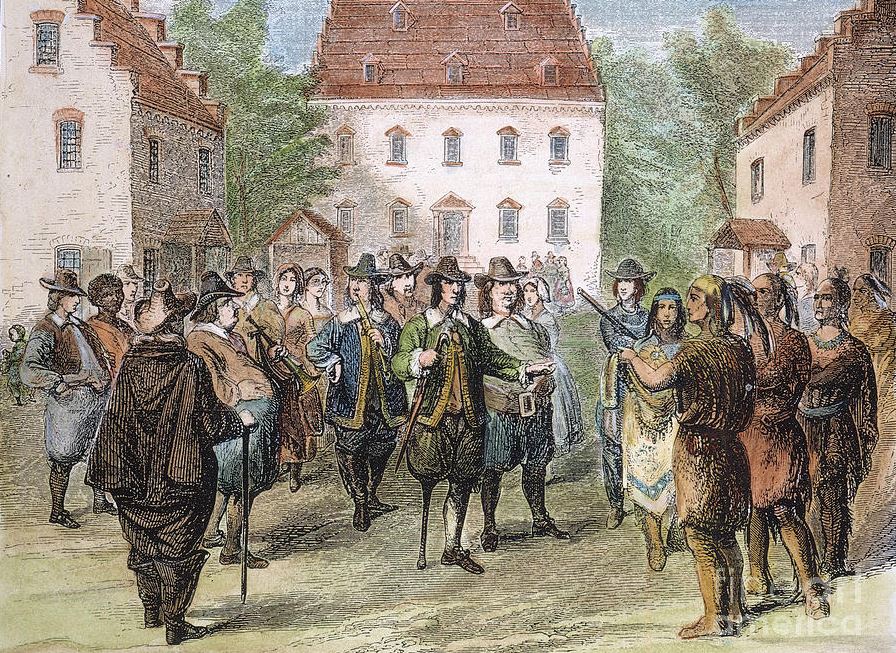
Governor Peter Stuyvesant and Dutch settlers in New Amsterdam, 1660. Artist is Granger. From: https://heart2heartstories.com/tag/new-amsterdam-pioneer/. (Click on image for a larger view.)
England always had a keen eye out for New Netherland’s bountiful resources, trade routes, and natural harbors. The pressure from the English armies up and down the Atlantic Seaboard finally became too great. In 1664, England gained control of New Netherland and promptly renamed it the Province of New York. New Amsterdam became New York City. The Dutch fought back for a while but, as long as the Brits did not interfere too much, they got on with their lives.
A century later, the Continental Army fought the Revolutionary War of Independence against the British. Battle lines and fortifications became common sights on farms across New York and New Jersey, many of them still owned by Dutch families.
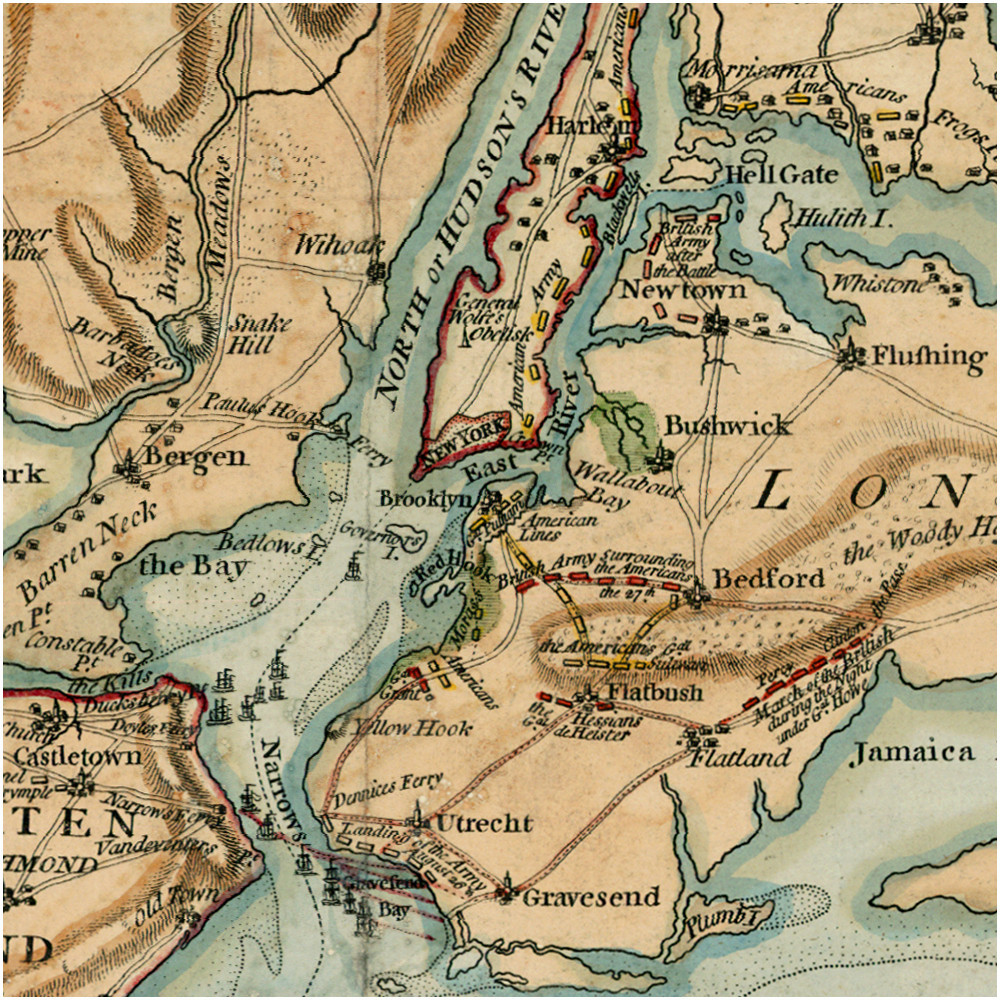
1776 Revolutionary War Map of the Battle of Long Island. From https://www.battlemaps.us/new-york-1776-battle-of-long-island-revolutionary-war-map/. (Click on image for larger view.)
Sacrifices were made and graves were filled but consider the Prize:
We hold these truths to be self-evident, that all men are created equal, that they are endowed by their Creator with certain unalienable Rights, that among these are Life, Liberty and the pursuit of Happiness.
To this day, Dutch influences are found in place names, language, government, architecture, and social customs across America. The Dutch are an often unrecognized and under-appreciated part of our deeply rooted American Heritage. For a wealth of information about America’s Dutch History and Heritage, explore the New Netherland Institute website.
* The Declaration of Independence was adopted by the Continental Congress on July 4, 1776, marking the formation of the United States of America. Two of its signers were of Dutch ancestry: Lewis Morris, a fierce proponent of American independence, who was reported to have said, “Damn the consequences, give me the pen.” and Phillip Livingston, who, though very wealthy, believed in the importance of public service. The 1783 Treaty of Paris ended the conflict and America was recognized by England as a sovereign and independent nation. The United States Constitution came into force on March 4, 1789 with the first session of the Congress of the United States. George Washington, Commander-in-Chief of the Continental Army during the American Revolutionary War, was inaugurated as the nation’s first President two months later.

